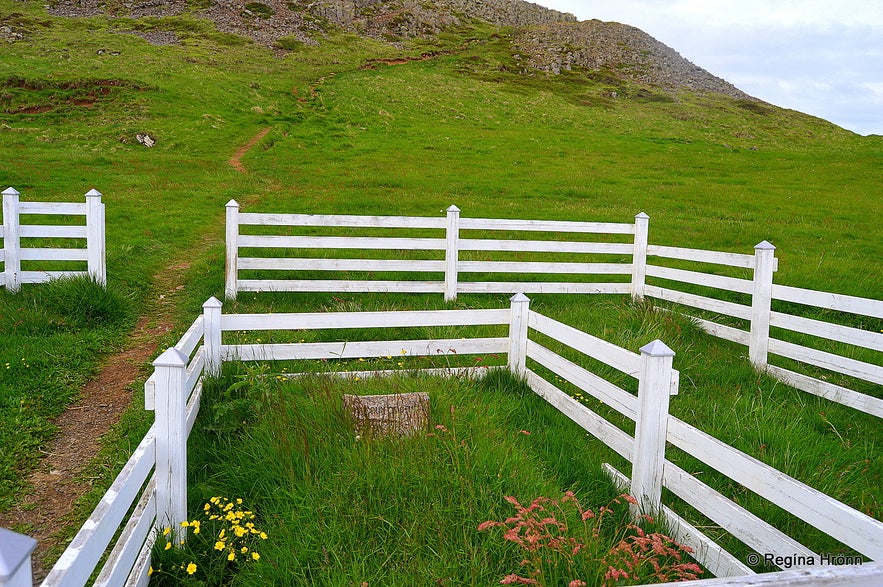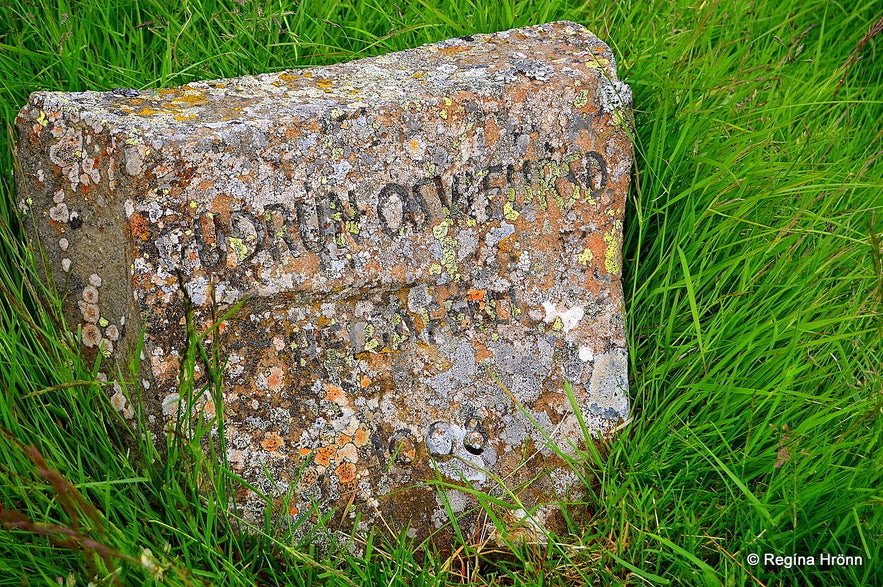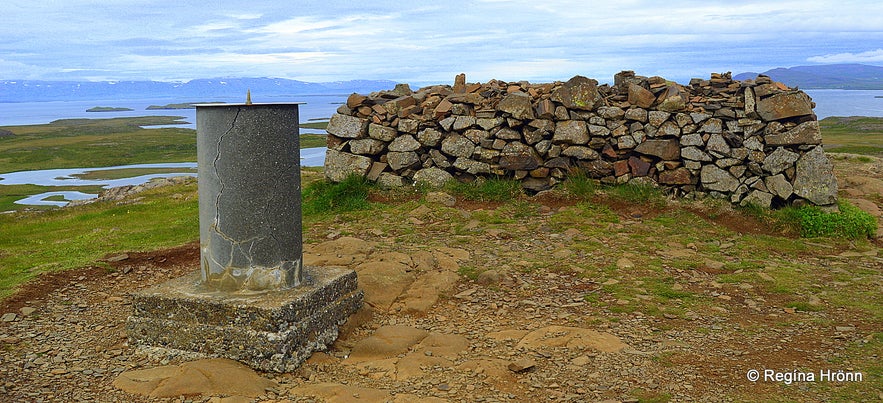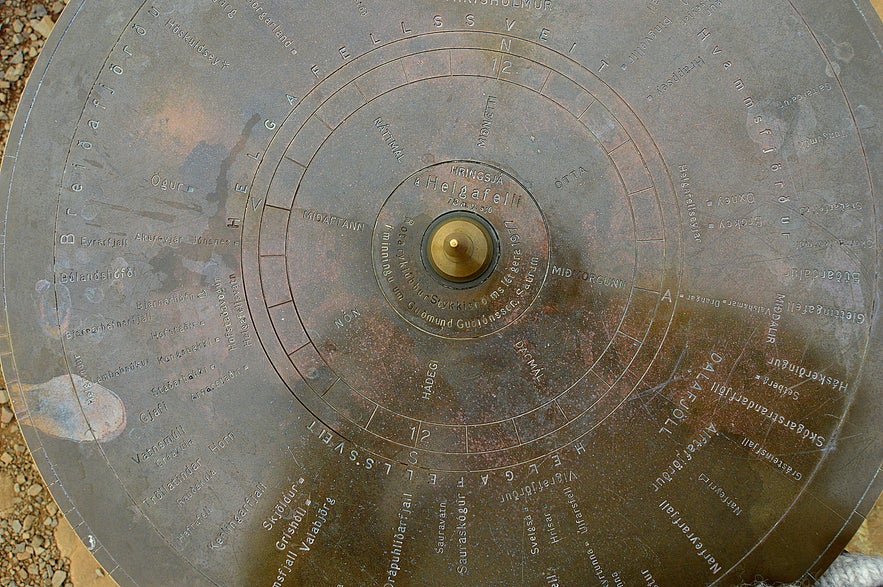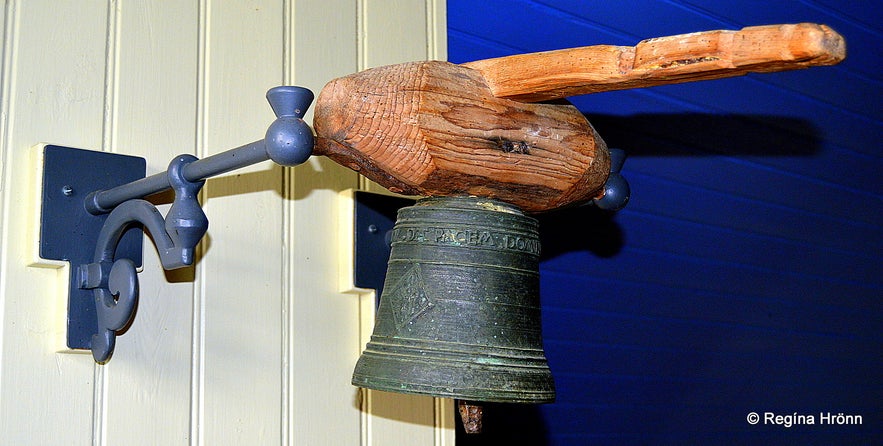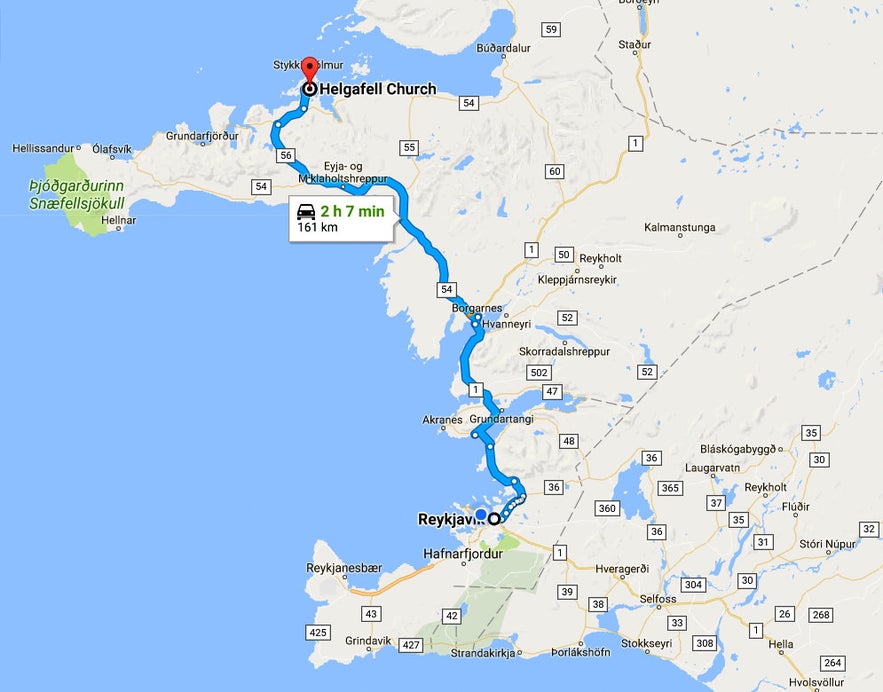
The Holy Mt. Helgafell on the Snæfellsnes Peninsula & the 3 Wishes

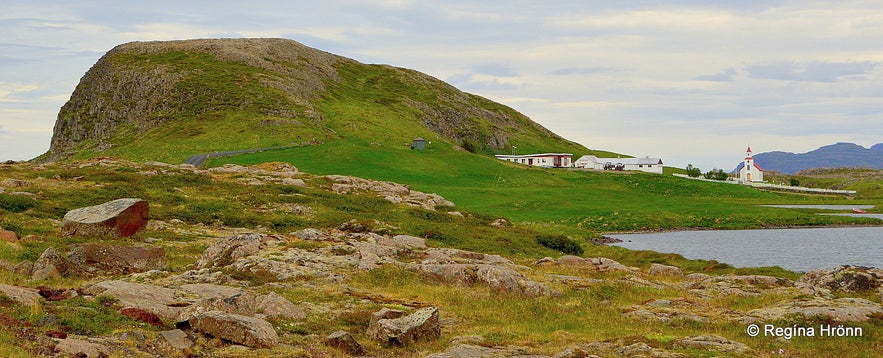
The historical Mt. Helgafell - the Sacred Hill - on the Snæfellsnes peninsula is in the eyes of many of us Icelanders a sacred place. It is believed that if you hike to the top of the mountain without looking back or uttering a word you will get 3 wishes fulfilled.
This only works the first time you hike the mountain though, so most Icelanders have already done this hike and got their wishes. Mt. Helgafell is 73 meters tall and it takes about 10 minutes to hike to the top. From there you will be rewarded with a great view of the Breiðafjörður bay and the surrounding areas.
Top photo: Mt. Helgafell
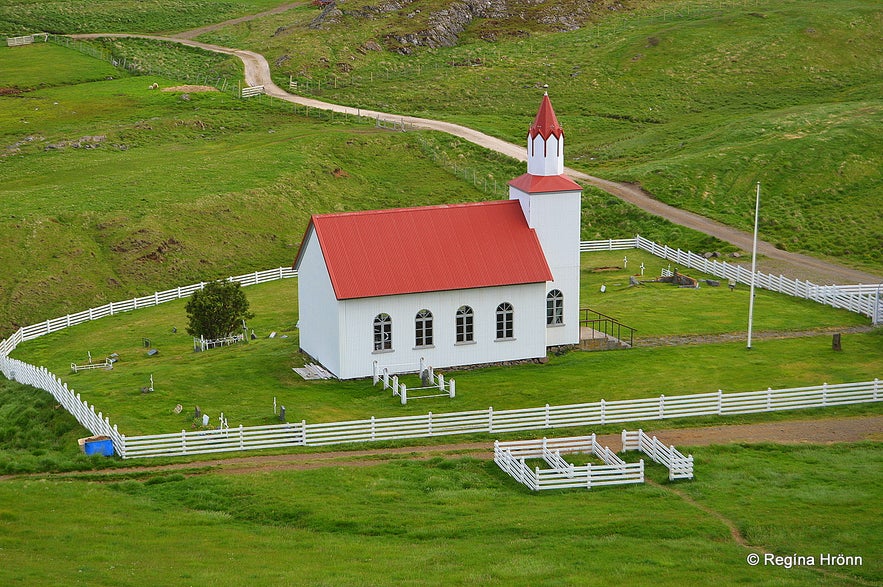
Helgafellskirkja church
I found it so lovely to read one comment on my travel-blog when we posted it on the Facebook page of Guide to Iceland. There Sarah Braun told us what happened when she made a wish on top of Mt. Helgafell: "We were there on the 4th of October 2016. My wish was a marriage proposal. On the same night, my boyfriend proposed to me under the Northern lights" :)
At Helgafell was an Augustinian monastery, which was a well-known seat of learning, from 1184 until the Reformation in 1550. This monastery was moved from Flatey island to Helgafell.
There has been a church here since the adoption of Christianity in Iceland in the year 1000. The current church beneath Mt. Helgafell was built in 1903.

Helgafell
Mt. Helgafell is mentioned in the 33rd chapter of Landnáma - the Book of Settlement: Þórólfur (mostrarskegg) settled land from Stafá river to Þórsá river and called it Þórsnes peninsula. He so highly revered a mountain that stood on the peninsula, which he called Mt. Helgafell, that no man should look in its direction unwashed.
And it was so sacred that nothing should be killed on the mountain, neither livestock nor men. And he believed that when he and his kinsmen died they would go inside the mountain.
Eyrbyggja Saga, which is an excellent Icelandic Saga, takes place in West Iceland and tells us that Þorsteinn þorskabítur, the son of the settler Þórólfur mostrarskegg, was the first one to live at Helgafell. His sons were Börkur digri (the stout) and Þorgrímur.

Written in Eyrbyggja is:
Þorsteinn þorskabítur had a son called Börkur the stout. The summer when Þorsteinn was 25 years old Þóra, his wife, gave birth to a son.
He got the name Grímur. Þorsteinn gave his son to Þór the God of Thunder and named him Þorgrímur.
That same autumn Þorsteinn went to Höskuldsey island to fish. One night his shepherd searched for sheep north of Mt. Helgafell. He saw the northern side of the mountain opening up. Inside the mountain, he saw large fires and heard noisy merriment and the sounds of a party. 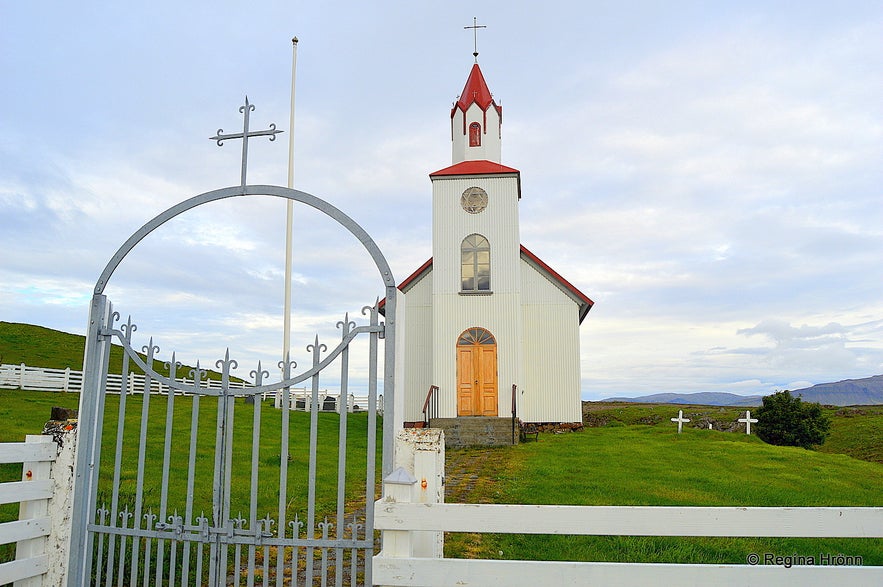
Helgafellskirkja church
He listened carefully to hear if he was able to make out the words. He heard that Þorsteinn þorskabítur and his men were being greeted. And he heard that Þorsteinn þorskabítur were to sit opposite the high seat of his father.
The morning after they got the news that Þorsteinn þorskabítur had drowned while fishing.
Þorgrímur, the son of Þorsteinn þorskabítur, was married to Þórdís, the sister of Gísli Súrsson from the Saga of Gisli the Outlaw.
Gísli killed Þorgrímur, his brother-in-law when Þórdís was pregnant and the married couple was asleep in their bed-closet at Sæból in Haukadalur in the Westfjords. Gísli was obliged to revenge another brother-in-law, Vésteinn, whom he believed that Þorgrímur had killed.
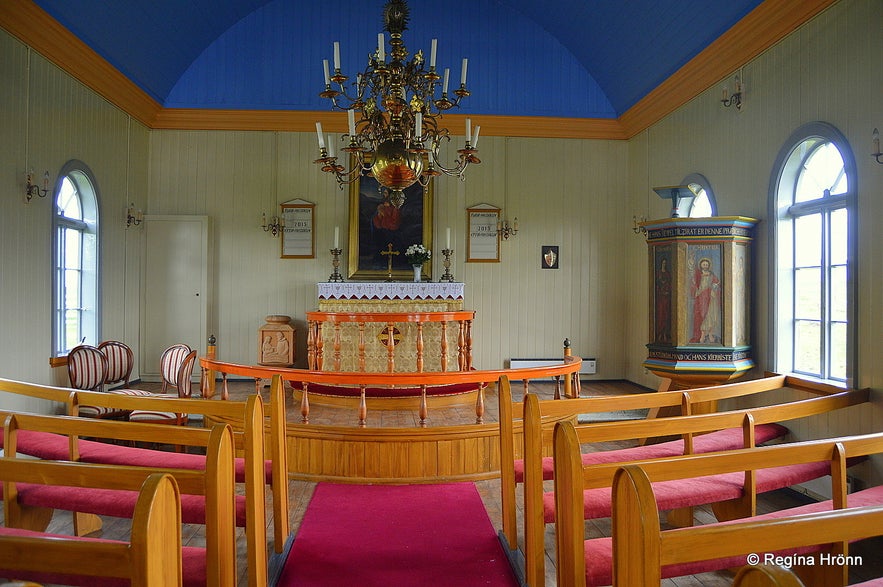
Inside Helgafellskirkja church
The son of Þorgrímur and Þórdís was the noted Snorri goði Þorgrímsson (964-1030) at Helgafell. He was named Þorgrímur after his father when he was born, but he was born after his father's death.
He was a bit unruly when he was a young boy, so he got the nickname Snerrir, which then stuck to him as Snorri.
After Þorgrímur got killed, Þórdís married his brother Börkur and they moved to Helgafell. Börkur and Snorri didn't get along, and later on, Snorri bought Helgafell from his uncle Börkur.
That same day Þórdís divorced Börkur and he went on his way according to Eyrbyggja. Þórdís then continued living at Helgafell with her son Snorri.
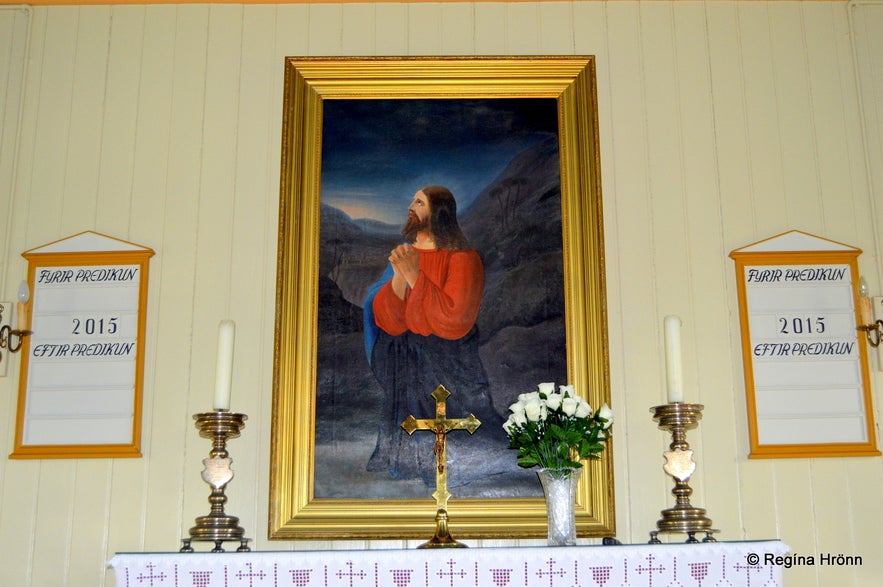
Inside Helgafellskirkja church
The Saga of Gísli the Outlaw tells the story a bit differently, that Þórdís divorced Börkur after Eyjólfur, who killed her brother Gísli with his men, came for a visit and Þórdís attacked him after learning that her brother had been killed.
She then divorced Börkur and went to live at Þórdísarstaðir farm on Öndverðareyri (Eyri). And that Börkur lived at Helgafell until Snorri managed to drive him away.
Snorri is one of the main characters of Eyrbyggja, which is a very eventful Saga, filled with Viking battles and revenge, and ghost stories. It also tells us in detail about the quarter parliament Þórsnessþing. A must-read in my opinion.
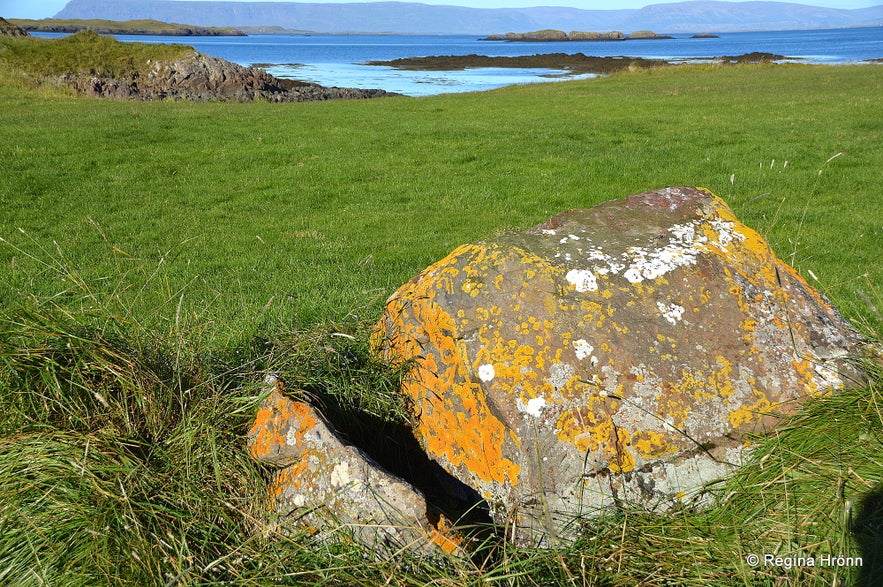
Þórssteinn rock at Þingvellir in Þórsnes, where the quarter parliament Þórsnessþing was located
In the 10th chapter of Eyrbyggja Þórssteinn rock is described: "There is yet to be seen the Doom-ring, where men were doomed to the sacrifice. In that ring stands the stone of Thor over which those men were broken who were sacrificed, and the colour of the blood on that stone is yet to be seen."
The quarter parliament site on Þórsnes is called Þingvellir, much like the main Þingvellir parliament site which was established in 930. And here you will also find Lake Þingvallavatn. And I have heard that tourists have followed their GPS all the way to Þingvellir at Þórsnes, when they meant to visit the Þingvellir where the tectonic plates meet!
In my photo below you can see Þingvallaborg and what we believe to be the site of the Þórsnessþing parliament.

Þórsnessþing quarter parliament
In 1008, when Snorri goði grew older, he switched properties with Guðrún Ósvífursdóttir (approx. 970) from Sælingsdalur, which is relatively close by.
Snorri is my ancestor 27 generations back. And Guðrún is my ancestress 27 generations back :)
Guðrún Ósvífursdóttir was one of the best-known characters in the Icelandic Sagas, but Guðrún's story is told in Laxdæla Saga. I have written a travel-blog about Sælingsdalur where I tell you about Guðrúnarlaug hot tub.
You can see what we Icelanders like to consider her grave north of the church.
It is almost startling seeing 1008 written on the memorial stone (which is the year Guðrún moved to Helgafell) and sitting by the grave makes me feel closely connected to my heritage. The memorial stone is made out of rock from the sacred Mt. Helgafell and was put up in 1979.
I read Laxdæla Saga when I was in college and again in 2021, and recommend it if you want to read an Icelandic Saga. It tells the story of Guðrún Ósvífursdóttir, Bolli Þorleiksson, and Kjartan Ólafsson, who made up the best-known love triangle in the Icelandic Sagas.
Guðrún was married 4 times in her lifetime, but later became a nun at Helgafell and lived there to old age.
The memorial stone on Guðrún's grave
The hike on Mt. Helgafell can either start from her grave outside of the churchyard, or on the west side of the mountain.
Traditionally though the hike should start by the grave after you walk around it 3 times anticlockwise, but seeing that you would have to pass by the farm at Helgafell, then it is going to disturb the farmer, as a lot of visitors hike up on top.
The farmer thus directs visitors to the hike on the west side of his farm. This is controversial, but this is the home and workplace of the farmer and his family, so their wishes should be respected, even though this is one of the historic places on the Snæfellsnes peninsula.
The view-dial on top of Mt. Helgafell in Snæfellsnes - There is another Mt. Helgafell with a view-dial on top in SW-Iceland
When you reach the top you should go to the ruins of a prayer chapel on top of the mountain, look east, and think about your wishes (which shall all be of positive nature), and don't tell anybody what you wished for.
We don't know for certain if this old stacked wall on top of Mt. Helgafell is a prayer chapel or something else, but it is called Kapellan or the Chapel.
It is believed to have been a part of the old monastery and thus dates back to 1184. As such it should not be disturbed in any way.
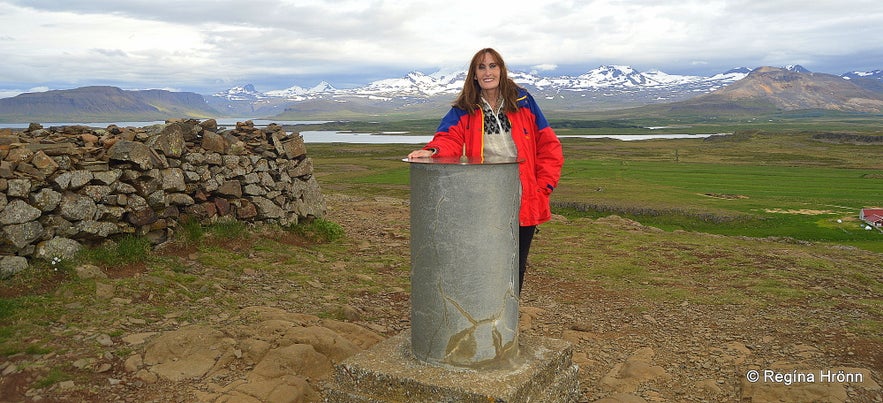
On top of Mt. Helgafell
You will find a view-dial (hringsjá) on top of Mt. Helgafell, erected in 1977. The Rotary Club of nearby Stykkishólmur had it made in the memory of Guðmundur Guðjónsson from Saurar.
It is one of the view-dials designed by the instigator of view-dials in Iceland, the noted Jón J. Víðis, who was my husband's great-uncle and namesake. Jón designed all in all 23 view-dials.
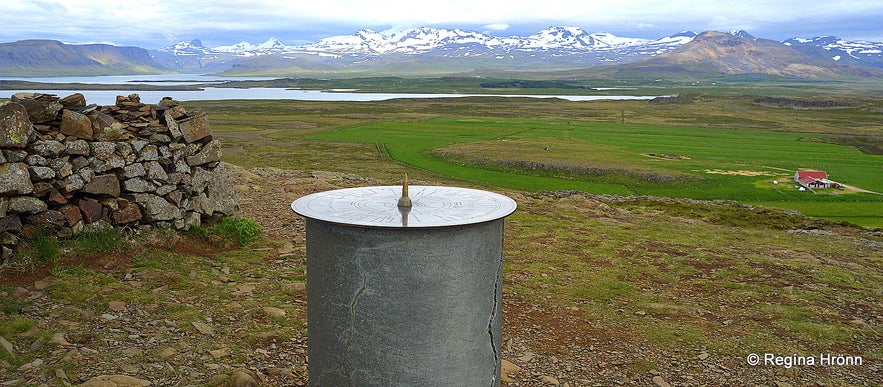
The view-dial on top of Mt. Helgafell
After his time Jakob Hálfdanarson, my father-in-law, has been the main designer of view-dials in Iceland.
I visit all the view-dials I can get to on my travels in Iceland and photograph them, as they are of great interest to me. I hope you appreciate my effort in introducing them to you.
I will not be able to visit the view-dials located on tall mountain tops though, as my forte does not lie in hiking up mountains, unless up small mountains like Mt. Helgafell ;)
This view-dial shows the names and heights of all the mountains in the surrounding area. It says on the view-dial that the mountain is 78 meters above sea level.
The view-dial on top of Mt. Helgafell Snæfellsnes
The view from the top of Mt. Helgafell is beautiful in all directions, extraordinary really. In the north direction, you will see Stykkishólmur town and the innumerable islands on Breiðafjörður bay, but these islands are on the list of 3 innumerable things in Iceland.
On Mt. Helgafell no man nor animal should be killed and the settlers believed that they would go into the mountain after their death.
Let's respect this sacred place and not dislocate rocks or leave anything behind. One never knows what repercussions it can have, whether we believe in it or not!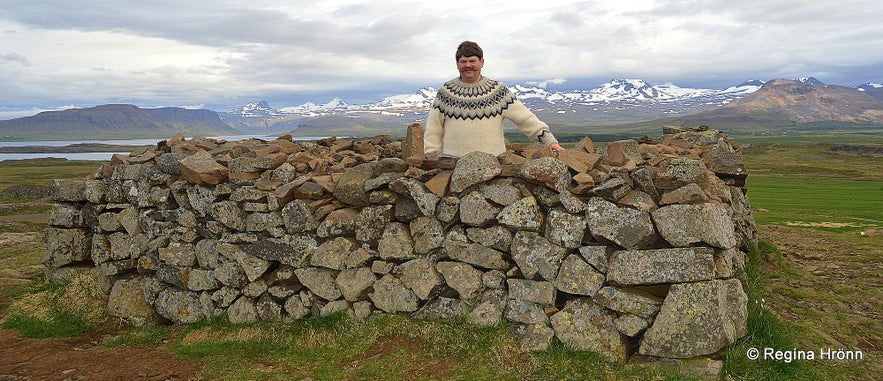
The ruins of what might be a prayer chapel on top of Mt. Helgafell
Now, let's return back to the car. Since I have hiked up on top of Mt. Helgafell so many times, then I have hiked on both sides of the mountain.
Hiking up on the west side is pretty much the same and I would advise you to take that path, even though it is not according to the old tradition.
It is only for my love of the Icelandic Sagas that I hike up from Guðrún's grave, but hiking up on the west side does not disturb the farmers at Helgafell, as then you don't have to pass their farm. I have also heard that the path from Guðrún's grave has been closed off now.
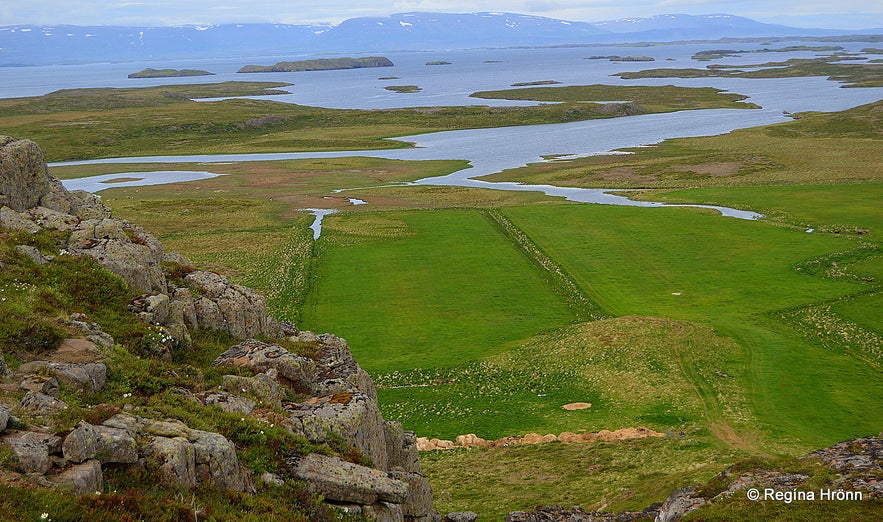
The view from Mt. Helgafell
Now, due to an increase in visitors to Iceland, the farmers at Helgafell are asking visitors, 12 years and older, to pay ISK 400 to visit Mt. Helgafell.
The farmers received a grant from Framkvæmdasjóður ferðamannastaða in 2014 to repair the damages already done to Helgafell by the myriad of visitors but were denied a grant in 2015 and 2016 to finish this task.
They have to maintain the trails, the parking lot, and WC facilities and also plan to have an employee supervising Helgafell, as an estimated 300 visitors visit Helgafell every day in the summertime.
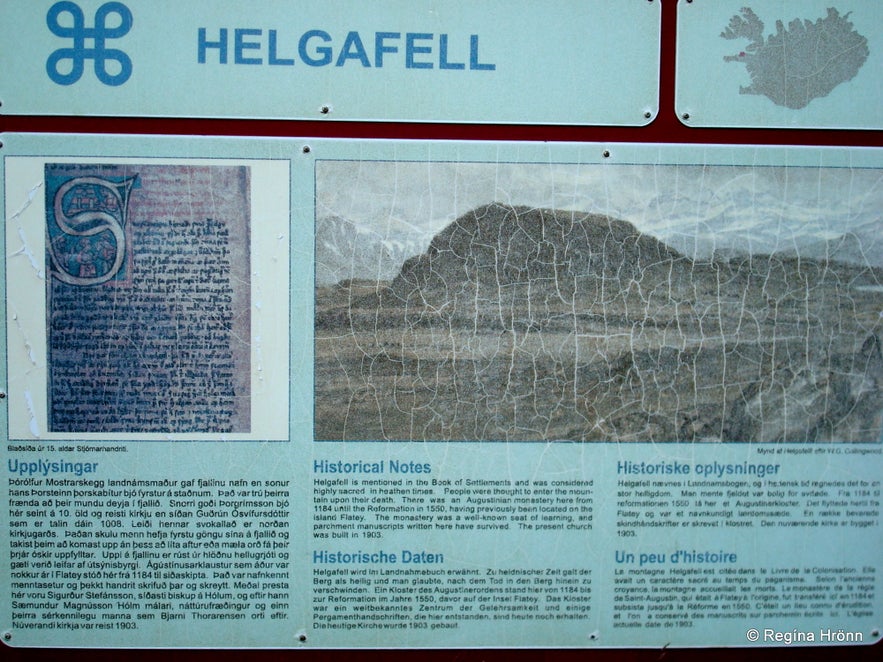
The information sign by Mt. Helgafell
The farmer is constantly adding sand to the trails, picking up trash that has been left behind! - and maintaining this very historical spot. I support them in charging visitors this small maintenance fee and feel badly knowing that visitors were even barging into their home to use their WC! It is not easy to have a farm on such a historic site.
It pains me to see such a sacred place like Mt. Helgafell being disrespected. Let's join hands and respect nature and historic places in lovely Iceland and never leave trash behind in nature, build stone piles or dislocate rocks.
Helgafell and the Giantess
An old bell in Helgafellskirkja church
On Hvítbjarnarey island (Polar bear island) in nearby Breiðafjörður, there is a boulder in a rift in the rocks.
It is of a different material than the other rocks on the island and the origin of this particular boulder is explained in Þjóðsögur Jóns Árnasonar - the Collection of Folklore of Jón Árnason, which I often refer to in my travel-blogs:
"Several stories exist of the giantess, who lived in Helgafellssveit region or in the mountains around here, first at Helgafell, but as a church was erected at Helgafell, the giantess moved to Mt. Kerlingarfjall. The following are three of these stories of the giantess.
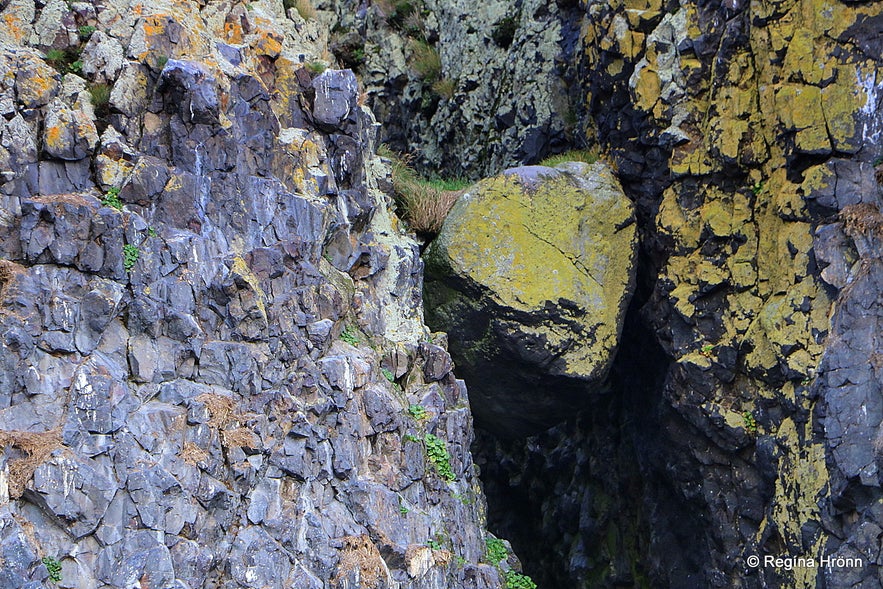
The boulder is of a different material than the rocks
Hvítabjarnareyja island (Polar bear island) is one of the islands above Stykkishólmur in Breiðafjörður.
It was named after a polar bear, which came ashore on the island and lay to rest on a stall on the southern part of the island, which is surrounded by tall cliffs.
A giantess was on the mainland, people say that she lived at Helgafell before Christianity was adopted in Iceland and a church was erected at Helgafell, but trolls are no fans of Christianity and churches. And they especially don't like hearing church bells ringing.
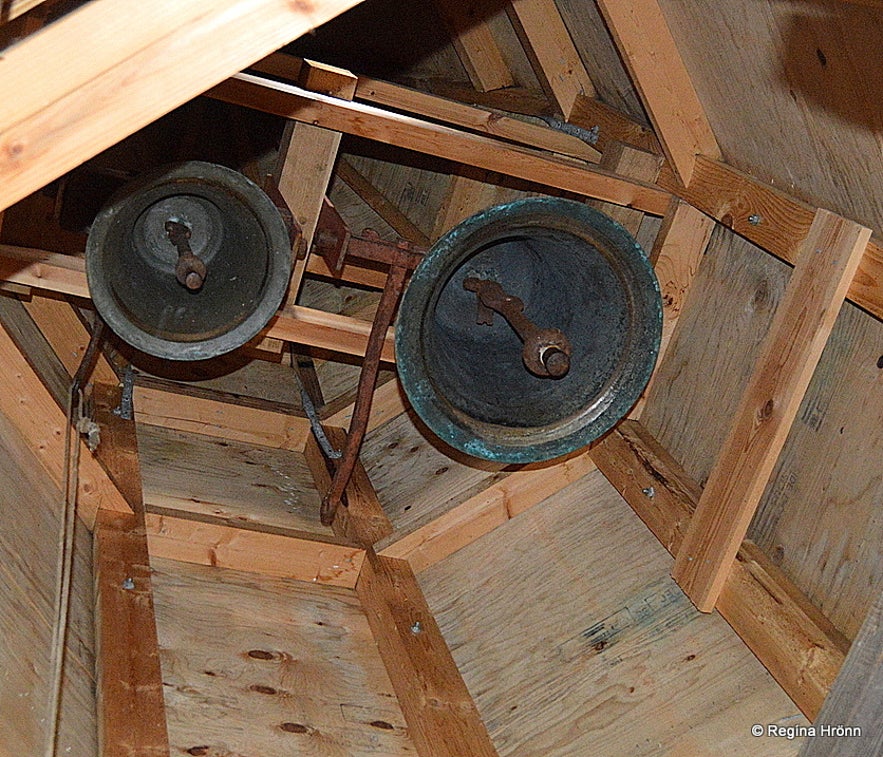
Church bells in Helgafellskirkja church
The giantess noticed that the polar bear was on the aforementioned stall on the island and thus she walked on top of Þingvallaborg, which is opposite the island from the mainland, and threw a huge boulder over to the island to kill the polar bear.
But as fate has it the boulder landed higher up than she intended and landed on the cliff tops, which are above and on both sides of the stall. The boulder still lies above the stall, but the polar bear didn't get hurt.
Another account from this region in the west is that the giantess who lived in Mt. Kerlingarfjall noticed that a man had gone fishing on a boat on Hrappseyjarsund strait, between Hrappsey island and Stykkishólmur.
The Giantess had a grudge against this man, the reason why is not mentioned in the account, and threw a huge rock towards the man sitting in his boat, but that rock landed in Hvítabjarnarey island and can still be seen there, but the giantess failed to kill the man.

Hvítabjarnareyja island in Breiðafjörður and the boulder
Close to Nesvogur by Stykkishólmur, one can find 3 little hummocks, which are believed to have been thrown there by the giantess in Kerlingarskarð cleft, but she meant to destroy the church at Helgafell with these hummocks".
(Translated into English from Þjóðsögur Jóns Árnasonar - the Collection of Folklore of Jón Árnason).
See also:
Kerlingarskarð Pass in Snæfellsnes in West-Iceland - the Folklore of the Giantess & her Fiancé
I have also heard that the boulder is said to have been thrown there by the giantess, who lived at Helgafell, as she wanted to destroy the church at Mt. Helgafell by throwing the bolder at it, but she missed and the boulder landed here on this island.
Stykkishólmur, the capital of the West, is very close to Mt. Helgafell, and there you will find hotels, restaurants and cafés, shops and supermarkets, and interesting museums and galleries. See also:
The Magical Snæfellsnes Peninsula in West-Iceland - Part V - Stykkishólmur & the Trip back to Reykjavík
I have written detailed travel-blogs in 5 parts about the Snæfellsnes peninsula in chronological order if you want to drive there yourself and prepare for the journey.
Have a lovely time on the Snæfellsnes peninsula :)
Andere interessante blogs
Noorderlicht in Ijsland
Als je nog nooit de kans hebt gehad om een ‘noorderlicht-show’ te zien en het één van je dromen is, dan is een reis naar Ijsland in de winter een echte aanrader. Het is geen garantie maar de kans beLees verderReizen naar IJsland per boot
Ik ben eind mei 2017 naar IJsland geemigreerd en ben met mijn eigen auto en de boot gegaan. Wat mij opviel is dat hierover heel erg weinig te vinden is qua reizigers ervaringen. Vandaar dat ik heb besLees verderGeitenboerderij Háafell
Ik geef het eerlijk toe, ik wist tot 2 jaar geleden ook niet van het bestaan van de IJslandse geit af. Totdat ik hoorde dat er 200 geiten op de nominatie stonden om geslacht te worden omdat in IJslandLees verder

Download het grootste reisagentschap van IJsland op je telefoon en beheer je hele reis op één plek
Scan deze QR-code met de camera van je telefoon en klik op de link om het grootste reisagentschap van IJsland in je zak te stoppen. Voeg je telefoonnummer of e-mailadres toe om een sms of e-mail te ontvangen met de downloadlink.
